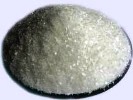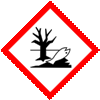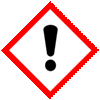Search for the supplies that you need here:
DMF Support and Documentations Available | |
 WHO-GMP Certified Good Manufacturing Practice Certified by World Health Organization |  WC, Written Confirmation for Active Substance to be imported into European Union (EU). |
Zinc Acetate SDS of Manufacturers
Anmol Chemicals is a manufacturer supplier exporter of Zinc Acetate and it offers materials as per IP BP EP Ph Eur USP NF JP FCC Food Grade as per the the latest monograph at best prices. Anmol Chemicals Group, established in 1976, is the pioneer manufacturer of Specialty Chemicals, Pharmaceutical Excipients, Some API, Food Chemicals in India. Anmol Chemicals Group has manufacturing facilities spread across Western India, representatives in Houston, Chicago USA and Dubai, UAE. We also have toll manufacturing units for processing chemicals in a few countries around the world. We make IP, BP, EP, USP, NF, Ph. Eur., JP, FCC or Food Grade, Analytical Reagent Grade, LR or Laboratory Reagent Grades and Pure Grades of various chemicals. All our items are analyzed to meet the required standards. We can supply the product in grams for your laboratory trial and in tons for your plant scale jobs.
We manufacture Bulk Drugs / API, Excipients, Pharmaceuticals (IP BP USP NF Ph Eur EP JP), Specialty Chemicals (Pure/Reagent), Mineral Fortifiers (FCC). Our manufacturing facility is FDA approved and GLP, cGMP, ISO9001, ISO14001, ISO/IEC 17025, ISO22000, FSSC 22000, ISO45001, FSSAI, Kosher, HALAL, COPP, WHO-GMP certified and Written Confirmation (WC) is available. Solid materials can be customized for particle size, shape, and bulk density. We observe WHO Good Manufacturing Practices and Good Laboratory Practices. We are a government-recognized STAR Export House and "Authorised Economic Operator (AEO)" per Indian Customs.
All technical documents and DMF support available.
Zinc Acetate Specifications of Manufacturers

Synonyms: ----
CAS Number: Dihydrate 5970-45-6 (Anhydrous 557-34-6), Molecular Weight: 219.51, Chemical Formula: (CH3COO)2Zn-2H2O, EINECS EC Number: 209-170-2, FEMA: ----
Zinc Acetate SDS GHS, Safety Data Sheet
MSDS Sheet, Material Safety Data Sheet 05-Dec-20
1. PRODUCT DESCRIPTION
Product Name & Other Names: Zinc Acetate Dihydrate.
Synonyms: Acetic acid zinc salt dihydrate or Zinc diacetate dihydrate.
CAS Number: 5970-45-6
EINECS EC Number: 209-170-2
Formula: (CH3COO)2Zn 2H2O
Recommended usage: Industrial Manufacturing.
2. HAZARD IDENTIFICATION
GHS, Globally Harmonized System Classification in accordance with 29 CFR 1910
Classification according to Regulation (EC) No 1272/2008
Acute toxicity, Oral Category 4, H302
Skin corrosion/irritation Category 3, H316
Serious eye damage/eye irritation Category 2A, H319
Hazardous to the aquatic environment, long-term hazard Category 1, H410
Labelling according to GHS & Regulation (EC) No 1272/2008
GHS Label Elements  Aquatic Toxicity |
GHS Label Elements  Irritant |
Signal Words: Warning
Hazard statements:
H302: Harmful if swallowed.
H316: Causes mild skin irritation.
H319: Causes serious eye irritation.
H410: Very toxic to aquatic life with long lasting effects.
Precautionary statements:
P262: Do not get in eyes, on skin, or on clothing.
P264 Wash skin thoroughly after handling.
P270: Do not eat, drink or smoke when using this product.
P273 Avoid release to the environment.
P280: Wear protective gloves/protective clothing/eye protection/face protection.
P314: Get Medical advice/attention if you feel unwell.
P330: Rinse mouth.
P301+312: IF SWALLOWED: Call a POISON CENTER or doctor/physician if you feel unwell.
P332+313: If skin irritation occurs: Get medical advice/attention.
P305+P351+P338: IF IN EYES: Rinse cautiously with water for several minutes. Remove contact lenses, if present and easy to do. Continue rinsing.
P337+P313: If eye irritation persists: Get medical advice/ attention.
P360: Rinse immediately contaminated clothing and skin with plenty of water before removing clothes.
P391: Collect spillage.
P501: Dispose of contents/container in accordance with local/regional/national/international regulations.
3. COMPOSITION/INFORMATION ON INGREDIENTS
Product Name & Other Names: Zinc Acetate Dihydrate.
Synonyms: Acetic acid zinc salt dihydrate or Zinc diacetate dihydrate.
CAS#: 5970-45-6)
EINECS EC Number: 209-170-2
4. FIRST AID MEASURES
Eyes - Check for and remove any contact lenses. In case of contact, immediately flush eyes with plenty of water for at least 15 minutes. Cold water may be used. Get medical attention.
Skin - Thoroughly wash exposed area for at least 15 minutes. Remove contaminated clothing. Launder contaminated clothing before reuse. Get medical attention if irritation persists.
Ingestion - Do not induce vomiting unless directed to do so by medical personnel. Never give anything by mouth to an unconscious person. If large quantities of this material are swallowed, call a physician immediately. Loosen tight clothing such as a collar, tie, belt or waistband.
Inhalation - Remove to fresh air. Give oxygen if breathing is difficult; give artificial respiration if breathing has stopped. Keep person warm, quiet, and get medical attention.
5. FIREFIGHTING PROCEDURES
Extinguisher Media: Use media suitable to extinguish surrounding fire.
Special Information: In the event of a fire, wear full protective clothing and NIOSH-approved self-contained breathing apparatus with full face piece operated in the pressure demand or other positive pressure mode. At high temperatures under fire conditions, it may produce toxic or irritating fumes. Fire-extinguishing work is done from the windward and the suitable fire-extinguishing method according to the surrounding situation is used. Uninvolved persons should evacuate to a safe place.
6. SPILL OR LEAK PROCEDURES
Personal precautions, protective equipment, and emergency procedures: Avoid breathing dust/fumes/gas/mist/vapors/spray. Use individual protective equipment (waterproof boots, suitable protective clothing, safety glasses, etc.). Restrict unprotected personnel from the area. Prevent any contact with hot surfaces. Do not approach facing the wind. Do not touch the spilled material.
Environmental precautions: Do not let the product enter drains, soil, or water sources.
Methods and materials used for containment Cleanup procedures and Storage:
Small Spill: Use appropriate tools to put the spilled solid in a convenient waste disposal container. Finish cleaning by spreading water on the contaminated surface and dispose of according to local and regional authority requirements.
Large Spill: Do not inhale dust, vapors, mist, or gas. Avoid dust formation. Contain spilled material. Cover with an inert, non-combustible absorbent material, (e.g. sand, earth, diatomaceous earth, vermiculite). Use a shovel to put the material into a convenient waste disposal container. Finish cleaning by spreading water on the contaminated surface and allow to evacuate as per law.
7. SPECIAL PRECAUTIONS
Precautions for safe handling: Apply according to good manufacturing and industrial hygiene practices. Ensure proper ventilation. In case of insufficient ventilation, wear suitable respiratory equipment. Wash thoroughly after handling. Do not drink, eat, or smoke while handling. Avoid contact with skin, eyes, and clothing. Minimize dust generation. Avoid breathing dust/fumes/gas/mist/vapors/spray. Avoid contact with eyes, skin, and clothing. Keep container tightly closed. Avoid ingestion and inhalation. Use individual protective equipment (waterproof boots, suitable protective clothing, safety glasses, etc.). Prevent any contact with hot surfaces.
Conditions for safe storage, including any incompatibilities: Store in cool, dry, and ventilated area away from heat sources and protected from sunlight in tightly closed original container. Keep air contact to a minimum. Store protected from heat, sparks and ignition sources and incompatible materials. Avoid contact with skin and eyes. Avoid inhalation of dust/mist/vapor. Do not store with incompatible materials like strong oxidizing agents and alkalis. Keep away from sources of ignition. Ground all equipment containing material.
8. SPECIAL PROTECTION INFORMATION
Exposure Limits: This product does not contain any hazardous materials with occupational exposure limits established by the region-specific regulatory bodies.
Respiratory Protection (Specify Type): None needed under normal conditions of use with adequate ventilation. NIOSH approved equipment should be worn if PELs are exceeded.
Ventilation System: A system of local and/or general exhaust is recommended to keep employee exposures as low as possible. Local exhaust ventilation is generally preferred because it can control the emissions of the contaminant at its source, preventing dispersion of it into the general work area.
Personal Respirators (NIOSH Approved): For conditions of use where exposure to dust or mist is apparent and engineering controls are not feasible, a particulate respirator may be worn. For emergencies or instances where the exposure levels are not known, use a full-face positive-pressure, air-supplied respirator.
Skin Protection: Wear protective gloves and clean body-covering clothing.
Eye Protection: Use chemical safety goggles and/or full face shield where dusting or splashing of solutions is possible. Maintain eye wash fountain and quick-drench facilities in work area.
Other Control Measures: Maintain good housekeeping in work area. Dust deposits on floors and other surfaces may pick up moisture and cause the surfaces to become slippery and present safety hazards. Handle in accordance with good industrial hygiene and safety practice. Wash hands after handling.
9. PHYSICAL DATA
Appearance and Odor: Zinc Acetate Dihydrate is white crystals, faint acetic acid odor
Odor: Not available.
Odor threshold: Not available.
pH: Not available.
Relative density: about 1.74
Melting point/freezing point: Not available.
Initial boiling point and boiling range: Not available.
Flash point: Not available.
Auto-ignition temperature: Not available.
Decomposition temperature: Not available.
Upper/lower flammability or explosive limits: Not available.
Vapor pressure: Not available.
Vapor density: Not available.
Evaporation rate: Not available.
Flammability (solid, gas): Not available.
Partition coefficient: n-octanol/water: Not available.
Solubility in Water: Appreciable (>10%)
Viscosity: Not available.
Molecular Weight: 219.51
Melting Point: 237 C (458 F).
10. REACTIVITY DATA
Stability: Zinc Acetate Dihydrate is stable
Conditions to Avoid: Heat
Incompatibility (Materials to Avoid): Alkalis, strong oxidizing agents
Hazardous Decomposition Products: Oxides of Zinc, carbon monoxide, carbon dioxide
Hazardous Polymerization: Will not occur.
11. TOXICITY DATA
Toxicity Data: oral rat LD50: 2460 mg/kg
Carcinogenicity: No component of this product present at levels greater than or equal to 0.1% is identified as possible or confirmed human carcinogen by IARC, ACGIH, OSHA and NTP.
Teratogenic Effects: Not available.
Mutagenic Effects: Not available.
Developmental Toxicity: Not available.
Reproductive Effects: No information available.
12. ECOLOGICAL DATA
Toxicity to fish: LC50 - Oncorhynchus mykiss (rainbow trout) - 0,55 mg/l - 96,0 h
Persistence and Degradability: Unlikely to persist due to water solubility.
Mobility: Likely to be mobile due to water solubility.
Bioaccumulation/ Accumulation: No information available.
Results of PBT and vPvB assessment: No data available for assessment.
Other adverse effects: Very toxic to aquatic life with long lasting effects.
13. DISPOSAL INFORMATION
Waste Disposal Methods: Dispose Zinc Acetate Dihydrate in accordance with all legal regulations.
14. TRANSPORT INFORMATION
DOT USA, TDG Canada & ADR/RID Europe:
UN number: 3077
Proper shipping name: Hazardous substance, solid, n.o.s. (Zinc Acetate Dihydrate)
Hazard class(es): 9
Packaging group: III
IMDG/IMO:
UN number: 3077
Proper shipping name: Hazardous substance, solid, n.o.s. (Zinc Acetate Dihydrate)
Hazard class(es): 9
Packaging group: III
IATA/ICAO:
UN number: 3077
Proper shipping name: Hazardous substance, solid, n.o.s. (Zinc Acetate Dihydrate)
Hazard class(es): 9
Packaging group: III
15. REGULATORY INFORMATION
USA Regulations:
California Proposition 65: Not listed.
SARA 311/312 Hazards: See section 2.
Section 16 - Additional Information
European Labeling in Accordance with EC Directives:
H302 = Harmful if swallowed.
H316 = Causes mild skin irritation.
H319 = Causes serious eye irritation.
H410 = Very toxic to aquatic life with long lasting effects.
Classification according to EU Directives 67/548/EEC or 1999/45/EC:
Hazard Symbols:
Xn: Harmful
N: Dangerous for the environment
Risk Phrases:
R22 Harmful if swallowed.
R36 Irritating to eyes.
R50/53 Very toxic to aquatic organisms, may cause long-term adverse effects in the aquatic environment.
DISCLAIMER: The information and recommendations set forth herein are presented in good faith and believed correct as of the date hereof. It is compiled from various sources and it is not necessarily all inclusive nor fully adequate in every circumstance. In addition, these suggestions should not be confused with nor followed in violation of applicable laws, regulations, rules or insurance requirements applicable. This MSDS sheet is intended only as a guide to the appropriate precautionary handling of the material by a properly trained person using this product. Individuals receiving the information must exercise their independent judgment in determining its appropriateness for a particular purpose.



Manufacturer Supplier Exporter
ANMOL CHEMICALS Private Limited
Representatives in Houston, Chicago and New York, USA
TEL: (OFF) +91 22 23726950, +91 22 23774610, +91 22 23723564
Taloja Navi Mumbai, Banglore, INDIA
e-mail: info@anmol.org
Copyright and Usual Disclaimer is Applicable
Last updated 26-oct-25
Exporters to USA, Canada, UAE, Kuwait, Qatar, Gautemala, Tunisia, Europe, South Africa, Bangladesh, Sri Lanka, Tanzania, Kenya, Egypt, Iraq, Turkey, Israel, Vietnam, Nigeria, Uganda, Brazil, Chile, Argentina, Dubai, UAE, Saudi Arabia, Cameroon, Mexico, Brazil, Chile, Argentina, Korea, Thailand, Malaysia, Indonesia, Jakarta, Australia, China, Germany, France, etc.
Representatives in New York, Houston - Texas, Chicago - Illinois, Los Angeles.
All products are Sold for Industrial and Laboratory Use only.
Fast Selling IP BP Ph Eur EP USP NF JP Analytical Reagent FCC Food Grades of Chemicals by Anmol Chemicals
Ammonium Persulfate --- Acetic Acid Glacial --- Aluminum Chloride --- Ammonium bicarbonate --- Benzyl Alcohol --- Butylated Hydroxyanisole --- Butylated Hydroxytoluene --- Boric Acid --- Calcium Butyrate --- Calcium Chloride --- Calcium Hydroxide --- Calcium Lactobionate --- Calcium Saccharate --- Carbamide Peroxide --- Calcium Oxide --- Calcium Sulfate --- Chromic Chloride --- Fumaric Acid --- Magnesium Butyrate --- Magnesium Chloride --- Magnesium Sulfate --- Malic Acid --- Maleic Acid --- Manganese Chloride --- Manganese Sulfate --- Octyldodecanol --- Oleic acid --- Phenylethyl Alcohol --- Propylene Carbonate --- Potassium Hydroxide Pellets --- Potassium Alum --- Selenious Acid --- Sodium Acetate --- Sodium Bromate --- Sodium Selenite --- Sodium Perborate --- Sodium Hydroxide --- Sodium Sulphate --- Sodium Sulfide --- Sodium Thiosulfate --- Urea --- Zinc Chloride --- Zinc Sulphate ---


















